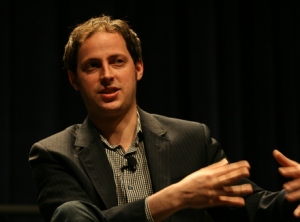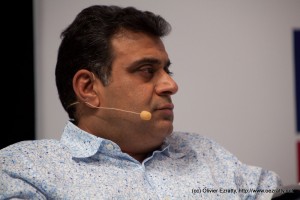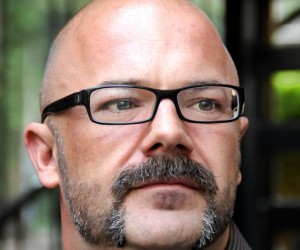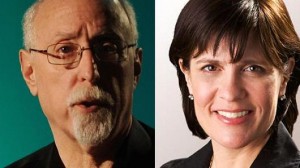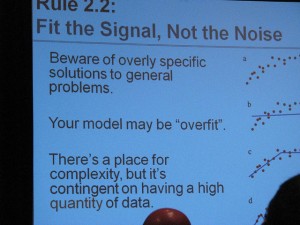“Events by which ‘Dr. V’s Magical Putter’ came to be published are now the best argument I have for you on diversity in the newsroom. Here is what can happen when you are not diverse enough. Like it?”
The most striking fact for me in this rousing apology letter from Bill Simmons: (I wrote about it in my last post, which provides the context for this one…) was the number of editors who pored over the piece, Dr. V’s Magical Putter, without seeing anything amiss. Some 13 to 15 pro journalists read it before publication and no one saw the problems for which Simmons, pro journalist, founder of Grantland, later had to apologize.
This is significant information. Before Grantland described the editing, it seemed like thin performance by inexperienced or distracted people. They just weren’t paying attention. At Nieman Storyboard, where narrative non-fiction is dissected, I came across this exchange about Dr. V between two experienced editors:
I think that piece is emblematic of so much of what I think is wrong with what’s happening in journalism today. We’ve got journalism and journalists struggling more than ever before to make a name and a living, and thereby more and more pressure on landing an amazing story. We’ve got less and less staff and experience, fewer and fewer “adults” around, more and more talented kids desperate to make a name and very little mentoring.
That turned out to be way off. Not a case of too little adult supervision. The editors were on it. They were all over it. They had been through it a hundred times. They had agonized and called in help. And they all thought alike on some things, even the “outside” help. This is the big reveal for journalists in the Dr. V episode. Events by which “Dr. V’s Magical Putter” came to be published are now the best argument I have for you about diversity — real intellectual and intercultural diversity — in the newsroom. “Here is what can happen when you are not diverse enough. Like it?”
@jayrosen_nyu Next time I teach why diversity is not just about feeling good or making amends for history, I'm using this as a case.
— Zeynep Tufekci (@zeynep) January 21, 2014
There can be stories where it can be made almost invisible to you: just what you are publishing— and committing to. This happens when you can’t read your own work well enough to edit it properly. Readers are going to notice before the editors know there’s something to notice. And notice: when you have missing knowledge at the editors table, more editors taking a look doesn’t help. All this happened to the editors of Grantland, a rising franchise in writerly journalism. They all had the same sense of smell, and for a time didn’t know what they were serving. Read the letter again. It’s in there.
As I followed these events over the weekend they broke (January 17-19, 2014) I thought: We need to adapt Joy’s Law to journalism. Joy’s Law is named for Sun Microsystems co-founder Bill Joy: “No matter who you are, most of the smartest people work for someone else.”
In slightly more technical terms:
this ‘law’ emphasizes the essential knowledge problem that faces many enterprises today, that is, that in any given sphere of activity most of the pertinent knowledge will reside outside the boundaries of any one organization, and the central challenge [is] to find ways to access that knowledge.
Adapted to journalism it reads something like this: “No matter how good you are, most of the smartest sources are untouched by your reporting and unknown by your people.” They’re in the potential user base, though. They can be attracted by their own networks to mistakes in what you published— or it’s success. Most of the smartest sources aren’t in your story, but they can be brought to it by break downs and screw ups that become crossover hits.
Joy’s Law for journalism doesn’t always apply. Some stories: four or five people know everything. They’re the sources. Try to get them. Some stories: the users in the aggregate and some users in particular know way more than the journalist. Consult the Editor’s Letter. First reactions come in from the brethren in journalism: great piece! Go Caleb! Second wave of reactions saw something the editors did not. When the editors looked, they saw something they could not defend.
On January 17-18 in online conversation and in emails to the office from readers, the smartest judges of the Grantland story worked for someone else. “Most of the pertinent knowledge will reside outside the boundaries of any one organization…” That’s why, if you’re one of the 13 to 15 who approved the story, you listen hard to the Twitter rage at you over the weekend, and try to make sense of it, even if you don’t “agree,” even if some of it is “extreme.” Because it’s probably picking up what your roundtable missed. Joy’s Law for journalism says that’s likely.
Odds for this method: unlikely.
Everything you guys have been saying is true: Blocking people feels fantastic.
— Caleb Hannan (@calebhannan) January 17, 2014


